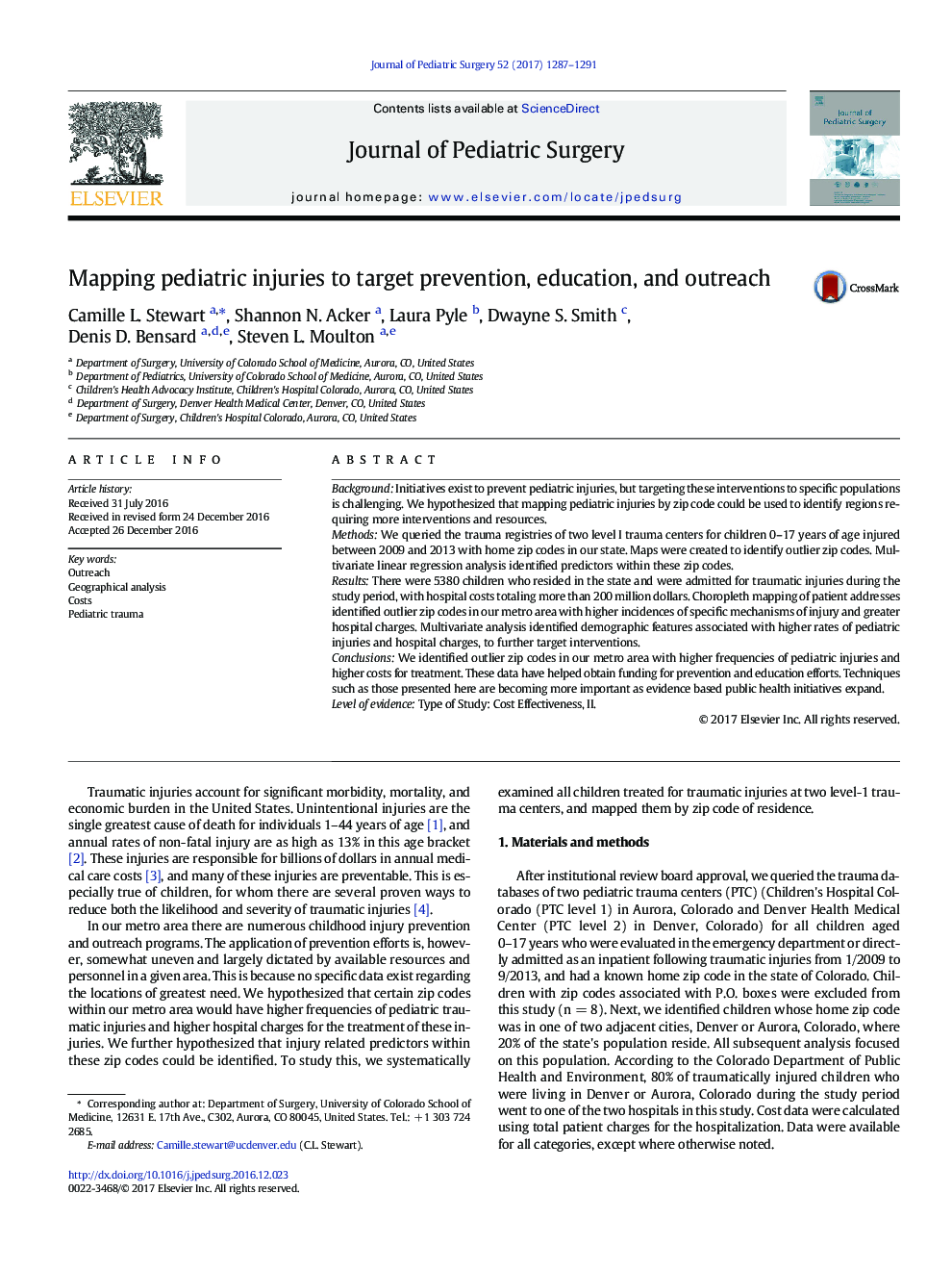| Article ID | Journal | Published Year | Pages | File Type |
|---|---|---|---|---|
| 5718101 | Journal of Pediatric Surgery | 2017 | 5 Pages |
BackgroundInitiatives exist to prevent pediatric injuries, but targeting these interventions to specific populations is challenging. We hypothesized that mapping pediatric injuries by zip code could be used to identify regions requiring more interventions and resources.MethodsWe queried the trauma registries of two level I trauma centers for children 0-17Â years of age injured between 2009 and 2013 with home zip codes in our state. Maps were created to identify outlier zip codes. Multivariate linear regression analysis identified predictors within these zip codes.ResultsThere were 5380 children who resided in the state and were admitted for traumatic injuries during the study period, with hospital costs totaling more than 200 million dollars. Choropleth mapping of patient addresses identified outlier zip codes in our metro area with higher incidences of specific mechanisms of injury and greater hospital charges. Multivariate analysis identified demographic features associated with higher rates of pediatric injuries and hospital charges, to further target interventions.ConclusionsWe identified outlier zip codes in our metro area with higher frequencies of pediatric injuries and higher costs for treatment. These data have helped obtain funding for prevention and education efforts. Techniques such as those presented here are becoming more important as evidence based public health initiatives expand.Level of evidenceType of Study: Cost Effectiveness, II.
